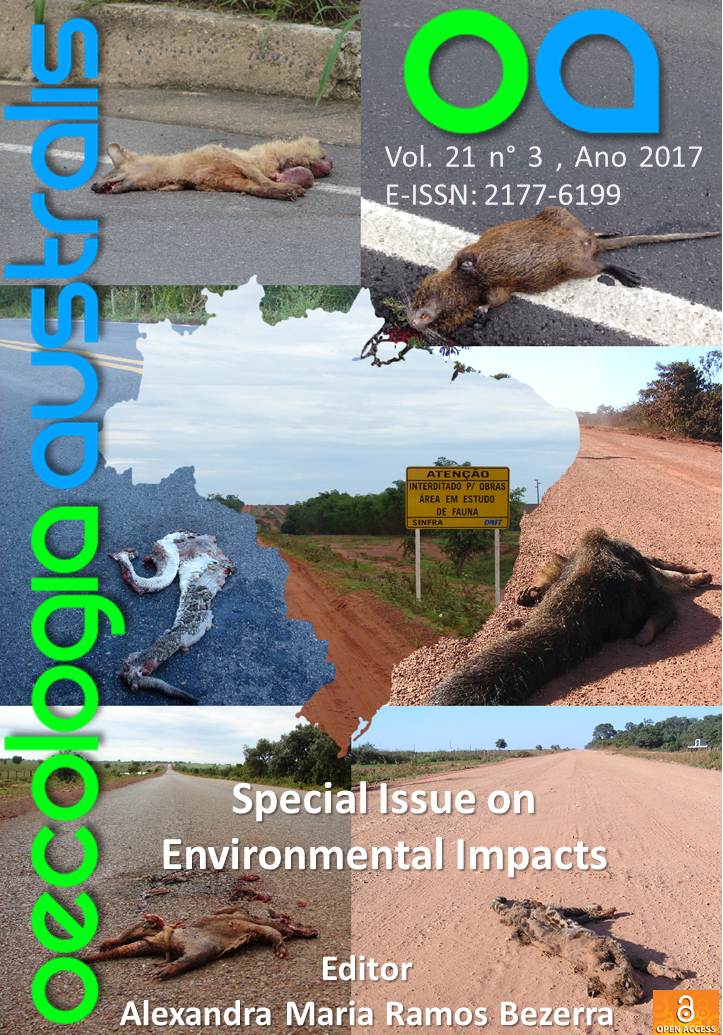FOLLOWING THE “WHY? WHAT? AND HOW?” SCHEMA TO IMPROVE ROAD-KILL EVALUATION IN ENVIRONMENTAL IMPACT ASSESSMENTS OF SOUTHERN BRAZIL
DOI:
https://doi.org/10.4257/oeco.2017.2103.03Keywords:
environmental licensing, road mortality, sampling protocol, scoping, wildlife-vehicle collisionsAbstract
Environmental licensing is one of the most important tools of environmental policies in any country, as it allows to adopt preventive and mitigation measures on predicted or observed environmental impacts. However, Environmental Impact Assessments are recurrently criticized due to their low quality and effectiveness to support decisions for project viability or mitigation planning. One way to counteract those limitations is by strengthening terms of reference. Here we present the results of a collaborative initiative carried out in southernmost state of Brazil to improve terms of reference for assessmentsof vertebrate road mortality in a context of road widening. This initiative integrated contributions from stakeholders involved in road planning, construction, operation and road environmental assessments and licensing through a series of workshops undertaken during two years. Using the Why, What and How schema, we first briefly present the reasons to evaluate wildlifevehicle collisions in environmental assessments, and then we comment some limitations of current legal regulations and environmental impact assessments in Brazil and identify the improvements needed. We describe the approach and principles used to develop a sampling protocol for what and how to sample and how to analyze vertebrate road mortality data in Brazilian roads. Finally, we present the result of this effort, the guidelines itself. Although focused on a single road impact (road-kill), we expect that our approach could be replicated to produce guidelines to improve assessments of other road impacts and even other types of infrastructures or activities for which environmental licensing is a pre-requisite.


